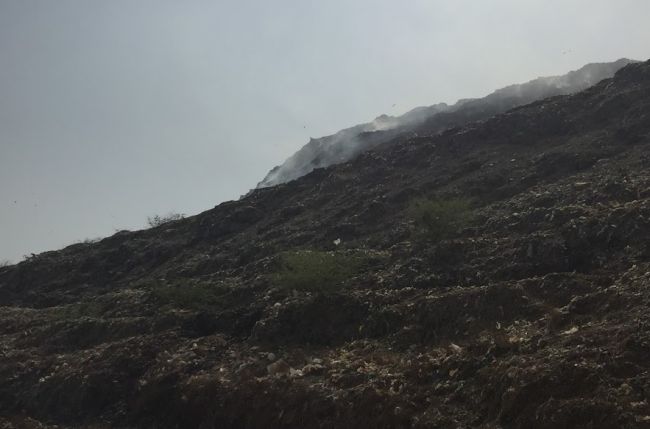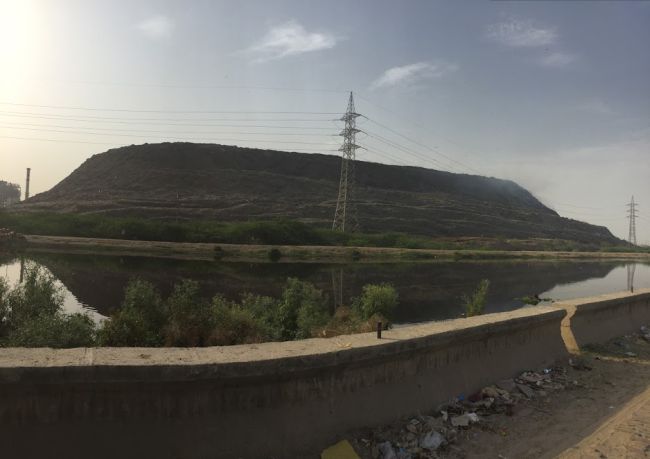The capital’s oldest garbage dump site is almost like a landmark in East Delhi’s Ghazipur area – a 80 feet tall mountain of garbage, which could tower over a 15-storey building tells a story of one of the biggest problems plaguing in the city, lack of Waste Management. On Friday, this 70-acre mountain collapsed, leaving two people dead and 5 injured, as it could not bear the weight of the trash anymore which had been piling up for over three decades.
After the mishap, garbage dumping in Ghazipur has been banned with immediate effect the and the waste was supposed to be diverted to a temporary site in Ghonda Gujran near Maujpur, but, the National Green Tribunal rejected the site saying that this area is near the Yamuna and is ecologically sensitive. However, the temporary site for waste dumping is yet to be finalised by the authorities.
The Lieutenant Governor of Delhi has also directed the East Delhi Municipal Corporation that the entire landfill site should be cleared within two years’ time span. The Green Court also issued a notice to the Delhi government, the East Delhi Municipal Corporation (EDMC) and others over the Ghazipur landfill tragedy and have asked them why the adequate actions on managing the growing garbage mountain were not taken time and again.
Watch: Expert Speak: India’s Overflowing Landfills Is a Ticking Bomb
Here are some of the things to know about Ghazipur landfill which led to this mishap
- Ghazipur Landfill, Relentless Garbage Pile Up Since 1984 The Ghazipur landfill in east Delhi started way back in 1984, and since then it has been in operation, thereby making it one of Asia’s oldest functional landfill. As per the Solid Waste Management Rules 2016, the average span of the landfill should be 20-25 years, but, this oldest landfill is more than 33 years old. What’s more, the landfill overshot its limit of 15 feet way back in 2002. Fifteen years later, it was still in operation in the absence of alternative sites.
- Ghazipur Landfill Has A Million Tonnes Of Trash A report by a non-profit organisation, Centre for Science and Environment claims that close to 4.74 million tonnes of garbage is lying at Ghazipur landfill site. The trash mountain had reached height barely 20 metres short of Qutub Minar, the world’s largest brick minaret.
- Stretching Beyond Its Life, Ghazipur Received 2500-3000 Metric Tonnes Of Waste Daily Every day, approximately 2500-3000 tonnes of garbage is dumped at the Ghazipur landfill, which is more than one-fourth of the garbage collected in Delhi. This scenario is when the landfill overshot its permissible limit way back in 2002. Coming to the treatment of the waste, the waste to energy plant at the site treats only 1,200 tonnes of waste.
Though the East Delhi Municipal Corporation had signed a memorandum of understanding with the National Highway Authority of India for utilising the segregated waste for building embankment for the roads. But, the project was put on hold, as a result, the growing garbage kept piling up at Ghazipur unattended without any treatment.
- Ghazipur Is Not Designed As Per The Municipal Solid Waste Rules As per the Municipal Solid Waste Rules the dump sites should have eco-friendly garbage management facilities and should have provisions for material recovery, treat leachate (liquid that drains or ‘leaches’ from a landfill) and provision to derive fuel out of waste. But, Ghazipur landfill has none of these facilities. Not just that, the landfill has no certification from Delhi Pollution Control Committee.
In Pics: 10 Things That You Need To Know About Solid Waste Management Rules 2016
- More Than 30 Lakh People Live Around Ghazipur Landfill
The overflowing Ghazipur Landfill impacts lives of more than 30 lakh people living within 10 km area of the landfill and the nearest residential settlement is just 200 metres away. The landfill is polluting the local air, groundwater, and poses a serious threat to Sanjay Lake, which is around 2.5 km away and the already dying Yamuna River, which is around 7 km away.


Even though the landfill is shut now, the danger is not over yet, as still heaps of garbage remain piled up at the location. The other two dumpsites in Delhi – Bhalaswa and Okhla, commissioned in 1994 and 1996 respectively have also exceeded their permissible limits just like Ghazipur. The only way to tackle this is effective waste management solutions and firm laws and implement waste segregation at source at the earliest.































